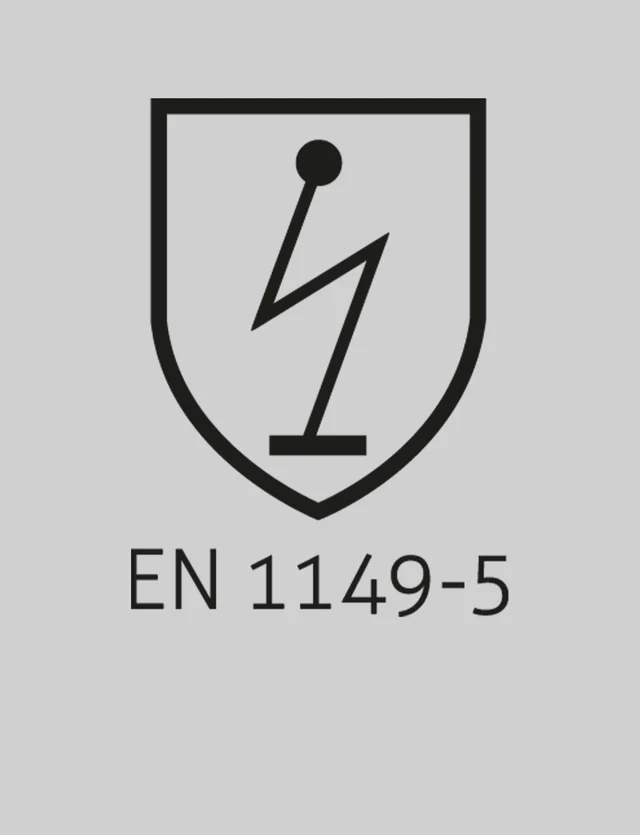EN 1149-5
Electrostatic properties, ATEX environments

Certified and approved garments that protect against electrostatic discharge according to EN 1149-5.
In addition to the fact that the material is antistatic, the standard also contains special design requirements. Garments or accessories in antistatic material that are not approved as individual protective garments are certified according to EN 1149-3 at the material level, for example: high-vis waistcoats and nail pockets. It is important that the protective garments are worn in combination with other antistatic equipment such as shoes, so that they become part of a grounded system.
For whom?
Workers in petrochemistry, energy, refinery, maintenance and offshore sectors, workers moving in ATEX-environments.
Protects against:
Static electricity, which can cause sparks. Reduces the risk of sparks in explosive environments or when handling flammable or explosive substances.
ATEX – a potentially explosive environment
The regulations apply where someone at work may be exposed to danger caused by an explosive environment. Applies to environments where there is a risk of explosive atmospheres being formed due to flammable gases and liquids or dust and steam.
Examples of ATEX environments:
Energy companies with solid fuel, oil fuel and/or natural gas
Petrochemical industry
Powder and chemical handling in various forms
Forest industry
Petrol stations
Workplaces handling LPG or other flammable gas/liquid
The ATEX directives with recommendations on how to dress in ATEX environments are common to the entire EU. To ensure that the design is correct and that the garment is suitable for use in an ATEX environment, the following certifications are recommended: EN 1149-5 (electrostatic discharge), EN ISO 11612 (heat and flame) and IEC 61482-2 (electric arc). It’s also recommended that the garment is metal-free.
